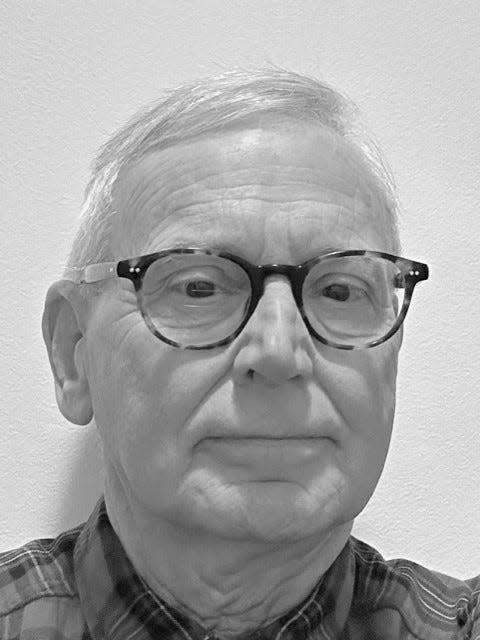Drake: Will the sun shine on the Hopewell Earthworks?
- Oops!Something went wrong.Please try again later.
Many people know that the Octagon Mound in Newark is aligned, by careful observation, with the rising of the moon. But another celestial body, the sun, might be ready to escape the clouds and burst into full light on all the Hopewell earthworks in Newark.
The National Park Service has approved and forwarded to the United Nations the application to have our geometric earthworks, both the Octagon and the Great Circle, designated as a UNESCO World Heritage site. If that status is granted, the whole world will be on notice of what extraordinary things can be seen in Licking County and elsewhere in southern Ohio. But how long has it taken for the sun to possibly fully shine on these wonders of the ancient world? Where did they come from? How long have people shown curiosity about them? Longer than you might think.
My family first moved to Ohio in 1789 and to Licking County in 1810, long after the history of the mounds had been forgotten by the Native Americans still living in the area and long before the European settlers, who were busy with other things, had taken much notice. But within a decade, notice had been taken, and on a national, not just a local scale. So, the sun began to peek through the clouds of this mystery just over two hundred years ago.
In 1812 the American Antiquarian Society was founded in Worcester, Massachusetts as the first “learned society” in the United States to be national in its scope. In 1820, two hundred and two years ago, the society published the first volume of its transactions, and in that initial volume a man named Caleb Atwater (1778-1867) authored a 160-page report, Description of the Antiquities Discovered in the State of Ohio and Other Western States. In his article Atwater included maps of eleven ancient sites in Ohio, and the first map was of the Octagon, Great Circle and associated, but now destroyed, mounds between the junction of Racoon Creek with the South Fork of the Licking River, which he said were “…some of the most extensive and intricate, as well as interesting, of any [mounds] in this state, perhaps in the world.”

Atwater had been born and educated in Massachusetts. After training as a minister, he studied law and moved to Circleville, Ohio in 1815. Atwater was what was called in his day an “antiquarian,” someone interested in all facets of the past. Circleville itself was originally built directly in and over a large circular earthwork consisting of two parallel mounds and a large square earthwork, and Atwater developed an early interest in earthworks beyond his new home town. His paper was ready for publication in Massachusetts in early 1820. Atwater later served in the Ohio legislature, as the Circleville Postmaster and authored an early history of the State of Ohio.
Atwater described with care the shape and size of the works in Newark and the height of their walls, and was very impressed by the parallel “avenues” of mounds which seemed to connect them. He believed that the large works were “…military works of defense.” He was certain that they had not been built by the Native Americans then living in Ohio or their ancestors, but by a more ancient race for which he had great respect. He analogized the Hopewell mounds in Ohio to mounds built by ancient peoples all over the world, including mounds mentioned in the Old Testament. He regretted the destruction of many of the mounds, which he could witness even in his day. While Atwater could not determine who had built them, he was deeply impressed.
Atwater had natural curiosity, but much of his speculation about the mounds was clearly not informed by what we understand today. Yet he must be given credit for having brought the mounds to national attention over two centuries ago. He authored the first known scholarly article about them. I think that if the remaining clouds clear and World Heritage status is granted, Atwater would be excited to see the mounds come into full sunshine.
Robert Drake is a retired lawyer who practiced law in Licking County for 45 years. He wrote this for The Advocate.
This article originally appeared on Newark Advocate: Drake: Will the sun shine on the Hopewell Earthworks?
